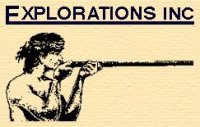Lima Food Tours
Gastronomy and Culinary Travel in Lima, Peru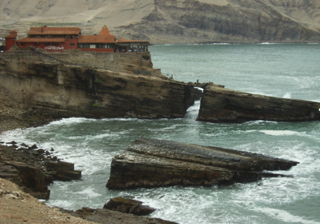
LIMA FOOD TOUR:
6 Day / 5 Night ItineraryDAY 1, Saturday: (Itinerary can be adjusted for starting on different days.)
Reception in Lima from USA flight and transfer to the colonial-style Hotel Antigua, located in the upscale district of Miraflores, for the five overnights. (http://www.peru-hotels-inns.com) Miraflores is known for its shopping areas, such as the Indian Market and Kennedy Park, and its gardens, flower-filled parks, and beaches. (Hotel upgrades, such as the Casa Andina Private Collection, Miraflores are available.)
DAY 2:
After breakfast at the hotel, your private guide (English and Spanish speaking unless otherwise requested) will meet you at the hotel for a tour of the city Francisco Pizarro named the City of Kings on in 1535. Taking advantage of the lesser traffic on a Sunday, we will explore downtown or Central Lima. After a quick stop at a local market for fresh fruit juice, we head to the Main Square, called the Plaza Mayor or Plaza De Armas. Next stop
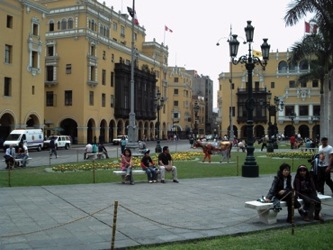
Then we walk through the most popular pedestrian street in Lima, the Jiron de la Union, to the San Martin Square, which was inaugurated in 1921 in celebration of the 100th anniversary of the independence of Peru. On the plaza is the historic hotel, the Gran Bolivar, which is worth a look around and maybe enjoy a "chela" (beer), or its bar’s famous Pisco Sour. There are many great places downtown for lunch. One of the popular and most charming ones is the historic El Cordano Bar, founded by Italians and famous for its sandwiches, such as “Butifara”. You return to the hotel in the late afternoon. (B)
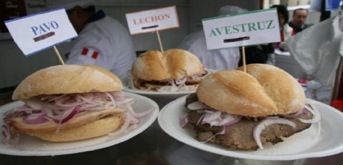
Daily breakfasts at the hotel are included. Unless noted (with L and/or D), costs of drinks, snacks, lunches, and dinners are not included as this allows you to choose what suits your taste that day in conjunction with your guide instead of us dictating where and what you eat. Your local guide will make suggestions on the best places and what to eat as you travel around. Checking out different options is part of the fun. (For a 360° view of the Main Plaza at night: http://www.panorammer.com/panoramas/4_plazadearmaslima_f.php)
(Note: Unless requested, lunches and dinners are not included to allow you the freedom of choice regarding to what to eat and where. The local guide can assist with any desired dinner reservations, or you can choose to eat at the hotel, or nearby restaurants, such as in Kennedy Park along the Calle de Pizza, or seaside at the nearby LarcoMar Mall. Famous Lima restaurants include: La Rosa Nautica, Punta Sal, Astrid y Gaston, Panchita, Rafael, Costanera 700, Malabor, Mangos, Caplina among others which can provide unforgettable dining experiences.)

DAY 3:
Today starts with a visit to the recently renovated Mercado Surquillo in Miraflores. It is Lima’s premier and largest food market. (Click here for a video tour.) The market contains a wide variety of well stocked of breads, fruits, cheeses, fish, meats, potatoes, dried beans, nuts, seeds, herbs, flowers and many of the natural products from all over the country of Peru. Your local guide will explain the unknowns - how they taste, and are prepared. Of course you may want to sample for yourself as you go by the many vendor stalls. It is normal to see women from the country wearing the colorful skirts of their region selling local products. The three floors have independent vendor stalls, small restaurants for take-out foods and craft shops. It is the market of choice for the gourmet chefs of Lima. The market includes an incredible range of meats, fish, and seafood. Upstairs in one of the restaurant stalls is a great place to view (and maybe taste) some of the many kinds of fresh ceviche. This combination of marinated fresh seafood is one of Peru’s most famous dishes.
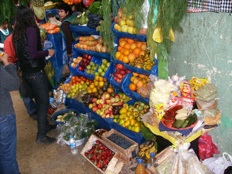
Afterwards is a visit one of Lima’s outstanding museums, the Larco Herrera Archeological Museum. Housed in a 18th century colonial building, the museum has the world’s largest private collection of pre-Columbian art, including its famous erotic art ceramics. The museum is also a setting for a fine meal of traditional Peruvian cuisine. Its Cafe del Museo is located in the gardens and directed by Peru's most prestigious chef, Gastón Acurio.
For dinner a great option is to take a Cooking Class! A chance to learn how to prepare some of Peru’s most famous recipes. One of the popular places for classes is the unique SkyKitchen in Miraflores. http://www.yurac.de/ They have a four hour dinner class with four dishes. You not only watch the chef preparing the food, but everybody prepares their own food. Afterwards you eat your self-made dishes together with the other participants and the chef. All that on a rooftop terrace with a great view over Lima. (B)
DAY 4:
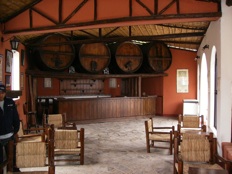
Travel south out of the city along the coast to the Lurin Valley. First stop is at Hacienda Ficus (or similar) to see their facitilites for viewing Peruvian Paso horses. Then you travel into an agricultural area for a tour of a working “lucuma farm”, which grows the lucuma fruit, native from Peru and great for ice creams and desserts. Afterwards is lunch the Hacienda or nearby La Gloria Del Campo (www.lagloriadelcampo.com). Their large open air, bamboo construction dining room is decorated with highflying whimsical birds and sits surrounded by the restaurant’s huerta, or large organic garden. The dining room and bar are built on a raised platform, affording diners with a view of the expansive gardens and outdoor kitchen. The outdoor kitchen includes several massive brick ovens, charcoal grill and smoker. Most of the cooking is done in the brick ovens. The area is alive with cooks baking bread, pizzas, braised dishes and roasted meats to in these wonderful brick ovens.
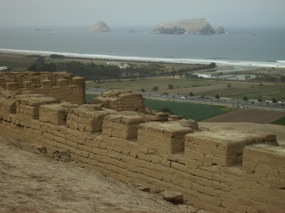
You then travel back towards the coast for a tour of the ancient ruins of Pacachamac to walk off lunch before dinner. This archaeological site overlooks the Pacific Ocean and predates the Inca by centuries, however the Inca did maintain it as a religious center. The extensive site, a sacred city and holy place of pilgrimage, includes plazas, adobe-brick palaces, and pyramidal temples, some of which have been rebuilt by the Peruvian government. The earliest constructions here date to the 1st century, although the site reached its apex during the Huari (or Wari) culture (10th c.). Pilgrims came here to pay homage to the feared oracle and creator-god, Pachacámac, who was believed to be responsible for earthquakes and matters of state such as war. The Incas conquered the site in the 15th century, and it was one of the most important shrines in the Americas during their rule, although its ceremonial importance began to wane soon afterward. However, two of the most important structures on-site, the Temple of the Sun and the Accllahuasi (or Mamacuña) palace (where "chosen maidens" served the Inca), both date to the Inca occupation. Hernán Pizarro and his gold-hungry troops arrived in 1533 but were disappointed to find a paucity of riches. On the premises is a small museum of pre-Columbian artifacts, including textiles and the dual-personage carved wooden idol of Pachacámac, god of fire and son of the sun god.
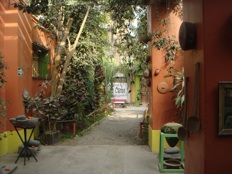
DAY 5:
After breakfast is a morning walk through the artsy and bohemian Barranco neighborhood, including the famous Puente de los Suspiros, or Bridge of Sighs.
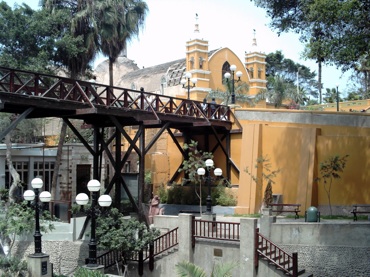
For an outstanding meal, overlooking Pre-Inca archaeological ruins, we recommend going to the Huaca Pucllana Restaurant, located in Miraflores next to the Pucllana ruins. Currently the Pucllana Archeological Zone spreads over 15 hectares with pyramidal structure's up to 23 meters high. The restaurant is located in and around a large old house. The bar and dining room inside are beautifully decorated. The high ceilings and low lights give it a special touch. They also have a dining area and bar at the terrace. It's also very well decorated, the view is just breathtaking and their desserts are extraordinary. Another great option is to have an “Amazonian” lunch at the upscale Malabar Restaurant, where renowned Chef Pedro Miguel Scchiafino prepares fusion dishes made with exotic ingredients from the Amazon.
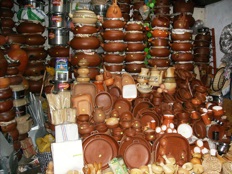
Afterwards is a visit to the famous Gold Museum, considered one of Lima’s premier attractions. It houses the private collection of Miguel Mujica Gallo, who spent years amassing it. It features gold figures, jewelry, masks, knives and artifacts from the Inca and colonial periods and also contains mummies, headdresses and other ancient relics. Upstairs from the Gold Museum is the equally fascinating Arms museum, which houses weapons and armor from many cultures. Artifacts from Peru’s history, such as items owned by the Pizarro brothers and Simón Bolívar, are also on display.
Now that you are more familiar with Peruvian cuisine, an option for dinner is to go shopping with a guide to a local market and/or modern supermarket for your desired meal. Afterwards, assisted by able cooks, you help prepare and share your meal in a local home. (B)
Day 6:
Transfer to the airport for flight back home or continue on with an extension to Cuzco (for great regional Andean cuisine) or another itinerary in Peru. (B)
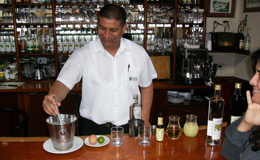
Click below for:
Cuzco Food Tours
Peru Food Info & Links
You are welcome to call us anytime at 1-239-992-9660, or toll free at 800-446-9660 or email us at travel@GoExploring.com
Return to the top of this webpage :)
